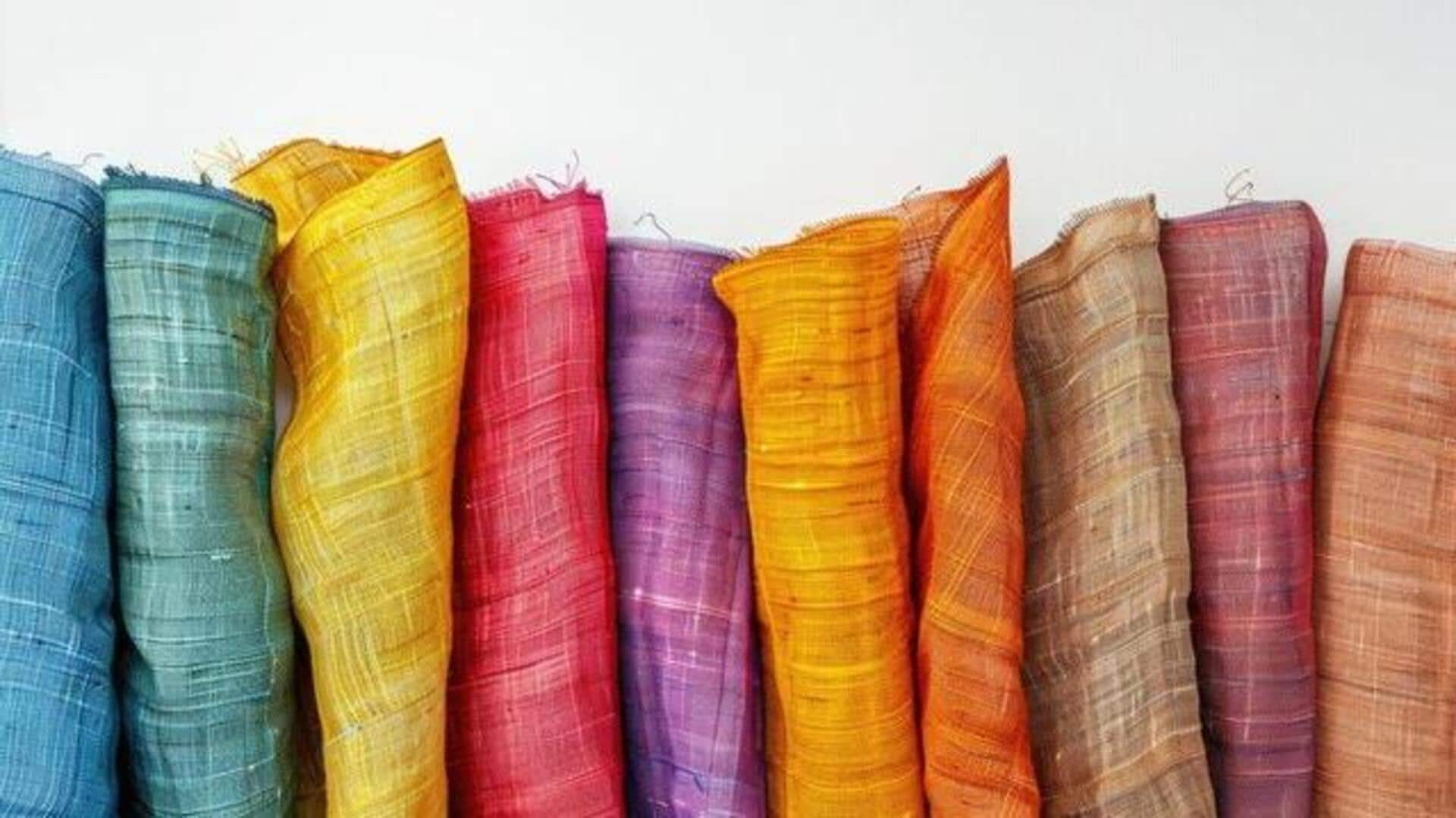The way you dress is a direct reflection of the way you think, feel, and behave. Since clothes and fashion have evolved to become such a fundamental aspect of how we present ourselves to the world, understanding the right material and occasion for a certain garment can make a huge difference.
For those starting off, navigating the often overlapping world of fabric selection can seem daunting. Here’s a guide on how to match your trendy vision to reality:
### Pick Your Purpose
When asked about the difference fabrics can make towards the look and feel of a piece of clothing, Manvi Gupta, co-founder of NeeluandManvi, a boutique store based in New Delhi, shared,
> “I think the choice of fabric can significantly impact the appearance and feel of a garment. The appropriate fabric not only dictates the outfit’s flow, form, and shape but also affects comfort, longevity, and how it interacts with the wearer. For instance, lightweight chiffons or georgettes create a soft, graceful appearance ideal for festive occasions, while luxurious silks or velvets bring richness and depth.”
Hence, before selecting a certain material, outline a larger vision for how you wish the garment to be perceived.
> “Ultimately, the choice of fabric is crucial to ensure that the design concept translates beautifully into reality while achieving the right mix of style and practicality,” Manvi adds.
### Understanding Fabrics
The first thing to keep in mind when trying to understand various fabrics is to let go of a one-size-fits-all approach.
> “Think about the event. Silks, organza, or brocades are perfect for formal or celebratory occasions, while lightweight, breathable materials like cotton, modal, or linen are great for everyday use. Second, consider the temperature. In the summer, natural, breezy materials keep you cool, while in the winter, heavier weaves like velvet or wool blends provide warmth,” reveals Manvi.
The technique, weaving, structure, and science behind a particular fabric can cause a great difference in the garment’s final look. As Manvi adds,
> “Focus on structure and drape. Stiffer materials like raw silk create a more defined silhouette, while fabrics like georgette or chiffon flow exquisitely. Finally, look for simplicity of care—some textiles need to be handled carefully, dried, or stored with care. The appropriate selection guarantees that the item not only looks stunning but also feels comfy and fulfills its purpose.”
### Learn to Distinguish
Learning to differentiate between similar fabrics will not only improve buyers’ knowledge of the product but also help make more meaningful decisions.
Although similar, georgette feels much heavier due to its crinkly texture compared to chiffon. Sateen gives a heavier look to the garment compared to the smooth and flowy drape of silk. Batiste is usually lighter and smoother than lawn, and gabardine is a more specific type of blend of twill. Velvet gives a deeper, more luxurious look to the garment than velour. Taffeta makes a ruffling sound when moved, while organza is known by its signature translucent look.
> “Flannel and brushed cotton differ in weight and warmth; brushed cotton is lighter, softer, and more breathable, while flannel is thicker and more insulating. Methods to distinguish between them include feeling the texture along and against the grain, examining the drape, and observing how a fabric reflects light,” shares Manvi.
### Sourcing
Whether you rely on an online or offline medium for your fabric shopping, what’s essential to remember is that the source remains reliable, transparent, and trustworthy.
Traditional buyers often depend on local shops and markets for buying fabrics. Looking at the material in person helps build reliability and develops a better understanding of the product. However, once the cloth is cut, few shopkeepers are interested in returning or exchanging the product. Hence, make sure your requirements are clear before making a purchase.
Online marketplaces remain open but are generally less advisable for beginners since customers must rely on product descriptions rather than tangible approval of the product. Returns, however, are usually much easier through online channels.
### The Long Run
> “The texture, strength, and longevity of a fabric are directly impacted by whether it is knitted, machine-woven, or handwoven. For example, power-loom fabrics can provide greater uniformity and durability for daily wear, but handloom fabrics frequently have a distinct character and breathability, making them ideal for handmade, timeless items,” shares Manvi.
> “The type of weave—loose vs. tight—affects a fabric’s strength, drape, and even how it ages.”
When making a purchase, the usual expectation regarding the durability of the product is high, especially if the item is a timeless or pricey piece.
> “In brief, the fabric’s artistry is just as significant as the fiber, influencing not only how it looks and feels but also how long it will remain a cherished part of your wardrobe,” she adds.
With these tips in mind, you can now dress and design your wardrobe with the flair it deserves.
https://www.freepressjournal.in/weekend/think-you-know-your-fabrics-most-people-get-this-wrong


